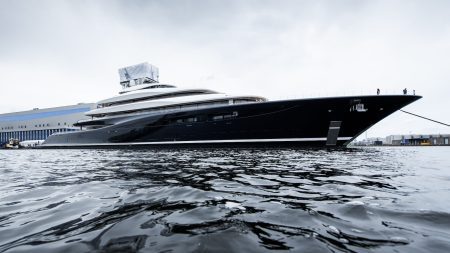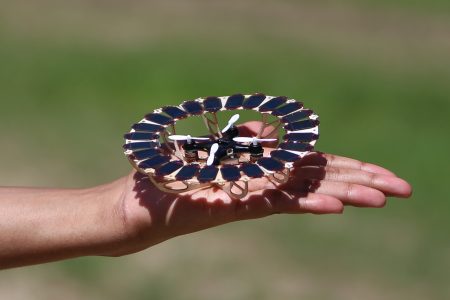A group of companies operating satellites in low Earth orbit are coming together to exchange information about natural and manmade dangers to their spacecraft.
The Space Information Sharing and Analysis Center, also known as Space ISAC, revealed on April 9 the establishment of the LEO Owner Operators Affinity Group, made up of Space ISAC members who operate satellites in LEO. The purpose of the group is to make it easier for these operators to share information about the various security threats they encounter.
Frank Backes, CEO of Capella Space, a company that specializes in synthetic aperture radar (SAR) imaging, and co-chair of the affinity group, stated that the formation of the group was driven by the desire to unite companies facing similar challenges related to LEO operations.
"The main goal is to bring together the thousands of satellites in low Earth orbit, as we are observing a wide range of threats in the environment we are operating in," he explained during an interview at the 39th Space Symposium.th One example is a natural occurrence: increased atmospheric drag caused by heightened space weather activity that shortens the lifespan of satellites. "Our aim is to gather this type of information," he said, emphasizing the importance of exchanging information among operators rather than solely relying on forecasts.
"We are also encountering deliberate threats from adversaries against our satellites," he added. "By communicating and discussing how to mitigate these threats, we can be much more effective when working together."
Capella also declared its formal membership in Space ISAC as a founding member. Backes remarked, "Founding members are able to represent the organization, so this is a crucial aspect when determining the strategy of Space ISAC and its future direction."
Backes has been involved with the organization since its establishment five years ago in his previous position at Kratos Defense and Security Solutions, including serving as chairman of the board and president. Six months ago, he took on the role of chief executive of Capella Space, succeeding the company's founder and CEO, Payam Banazadeh, who stepped down from the position but continued to serve on the company's board.
Backes expressed his admiration for Capella's overall capabilities, stating, "When I joined Capella, I expected it to be more of a new space startup, but I discovered a very established company with the expertise and experience to develop the entire system."
Capella is experiencing increasing demand for its radar imagery across commercial, civil, and national security space sectors. Backes mentioned that he was encouraged by
the Space Force's commercial space strategy that was released on April 10. and outlined how the service intends to make greater use of commercial capabilities, but he is eager to learn more about how it will be put into practice. "We will be awaiting the next steps, which include budget planning and acquisition," he said. "I think we are beyond the stage of needing study contracts to prove the relevance of commercial Earth observation. There is no doubt that we provide value."
Capella is still expanding its group of satellites, by sending its newest satellite, Capella-14, into space on SpaceX’s Bandwagon-1 mid-inclination rideshare mission on April 7.
The company revealed the initial pictures from the spacecraft on April 16 after finishing the post-launch setup of the satellite. Backes mentioned that the experience of launching on SpaceX’s first dedicated mid-inclination rideshare mission was “very positive”. This opportunity has made it more affordable to launch more satellites from an economic standpoint. The expense of the launch is now on par with our satellite costs.Despite this, Capella intends to keep launching satellites on specialized Rocket Lab’s Electron flights. “The main consideration for us is who can transport our satellite to the necessary location in the most efficient manner,” he explained. “If they can place me in the exact inclination at the exact altitude, I save fuel, which could extend the orbit’s lifespan by six months. This extension would offset the launch cost.”
A coalition of satellite operators in low Earth orbit are coming together to exchange information on both natural and human-made threats to their satellites.
However, Capella plans to continue launching satellites on dedicated flights of Rocket Lab’s Electron as well. “For us, it’s about who can take our satellite to where we need to go in the most economical fashion,” he said. “If you can put me into exactly the right inclination at exactly the right altitude, I save fuel that might translate into six months more life in orbit. Six months pays for the launch.”









